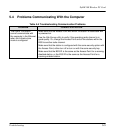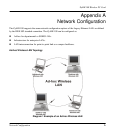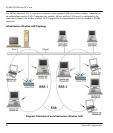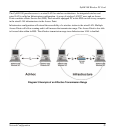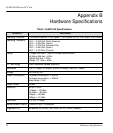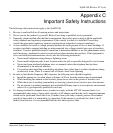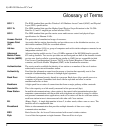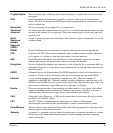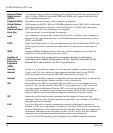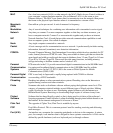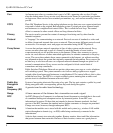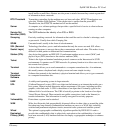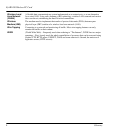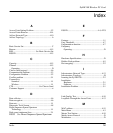
ZyAIR 100 Wireless PC Card
F Glossary
Glossary of Terms
802.11
The IEEE standard that specifies Wireless LAN Medium Access Control (MAC) and Physical
Layer (PHY) specifications.
802.11b
The IEEE standard that specifies Higher-Speed Physical Layer Extension in the 2.4 GHz
Band for 5.5 and 11 megabit per second wireless LANs.
802.3 The IEEE standard that specifies carrier sense media access control and physical layer
specifications for Ethernet LANs.
Access Control The prevention of unauthorized usage of resources.
Access Point
(AP)
Any entity that has station functionality and provides access to the distribution services, via
the wireless medium (WM) for associated stations.
Ad-hoc An Ad-hoc wireless LAN is a group of computers each with wireless adapters connected as an
independent wireless LAN.
Advanced
Mobile Phone
Service (AMPS)
Advanced analog mobile service. Uses a 50 MHz segment of the 800 MHz band to provide
832 analog channels. Two service providers are each assigned one half of the channels in each
service area. Analog cellular systems that are similar to AMPs but not compatible include
Total Access Communications System (TACS) in the United Kingdom, China and other
countries, and Nordic Mobile Telephone (NMT) in the Scandinavian countries.
Authentication The service used to establish the identity of one station as a member of the set of stations
authorized to associate with another station.
Authenticity Proof that the information came from the person or location that reportedly sent it. One
example of authenticating software is through digital signatures.
Back Door A deliberately planned security breach in a program. Back doors allow special access to a
computer or program. Sometimes back doors can be exploited and allow a cracker
unauthorized access to data.
Backbone A high-speed line or series of connections that forms a major pathway within a network.
Bandwidth This is the capacity on a link usually measured in bits-per-second (bps).
Base Station
In mobile telecommunications, a base station is the central radio transmitter/receiver that
maintains communication with the mobile radio telephone sets within its range. In cellular
and personal communications applications, each cell or micro-cell has its own base station;
each base station in turn is interconnected with other cells’ base stations.
Bit
(Binary Digit) – A single digit number in base-2, in other words, either a one or a zero. The
smallest unit of computerized data.
Broadband
Refers to telecommunication that provides multiple channels of data over a single
communications medium.
BSS Basic Service Set. An Access Point associated with several wireless stations.
Byte A set of bits that represent a single character. There are 8 bits in a byte.




